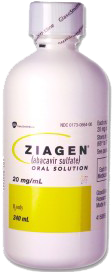 CLASSIFICATION: CENTRAL NERVOUS SYSTEM AGENT; ANXIOLYTIC; SEDATIVE-HYPNOTIC; BENZIODIAZEPINE
CLASSIFICATION: CENTRAL NERVOUS SYSTEM AGENT; ANXIOLYTIC; SEDATIVE-HYPNOTIC; BENZIODIAZEPINEPROTOTYPE: Lorazepam
Pregnancy Category: D
Controlled substance: Scheduled IV
Availability: 0.25mg, 0.5mg, 1mg, 2mg tablets; 0.5mg/5mL, 1mg/mL oral solution.
Actions: CNS depressant. Mode of action not known, thalamic, and hypothalamic levels of the CNS. It is associated with significantly less drowsiness.
Therapeutic Effect: Drug has antidepressant as well as antianxiety actions.
Uses: Management of anxiety disorder of for short-term relief of anxiety symptoms. Also used as adjunct in management of anxiety associated with depression and agitation and for panic disorders, such as agoraphobia.
Contraindications: Sensitive to benzodiazepines; acute narrow angle glaucoma; pulmonary disease; use alone in primary depression or psychotic disorders; during pregnancy (category D), lactation and children <18y.
Cautious Use: Impaired renal or hepatic function; history of alcoholism; geriatric and debilitated patients.Effectiveness for long term treatment (>4 mo.) not established.
Route and Dosage:
Anxiety Disorder:
Adult: PO 0.25-0.5 mg t.i.d. (max: 4mg/d)
Geriatric: PO 0.125-0.25 mg b.i.d.
Panic Attack:
Adult: PO 1-2mg t.i.d. (max: 8mg/d)
ADMINISTRATION
Oral:
- Reduce drug gradually when discontinuing drug.
- Store in light-resistant containers at 15-30degrees C (59-86deg. F), unless otherwise directed.
Adverse Effect: (>_1%)
CNS: Drowsiness, sedation, light-headedness, dizziness, syncope, depression, headache, confusion, insomnia, nervousness, fatigue, clumsiness, unsteadiness, rigidity, tremor, restlessness, paradoxical excitement, hallucinations.
CV: Tachycardia, hypotension, ECG changes.
Special Senses: Blurred vision.
Respiratory: dyspnea.
INTERACTION Drug: Alcohol and other CNS DEPRESSANTS, ANTICONVULSANTS, ANTIHISTAMINES, BARBITURATES, NARCOTIC ANALGESICS, BENZODIAZEPINES compound CNS depressant effects;
Herbal: Kava-kava, valerian may potentiate sedation.
PHARMACOKINETICS:
Absorption: Rapidly absorbed.
Peak: 1-2h.
Distribution: Crosses placenta.
Metabolism: Oxidized in liver to inactive metabolities.
Elimination: Renal elimination.
Half-Life: 12-15h,
>>BUY ALPRAZOLAM (XANAX)











